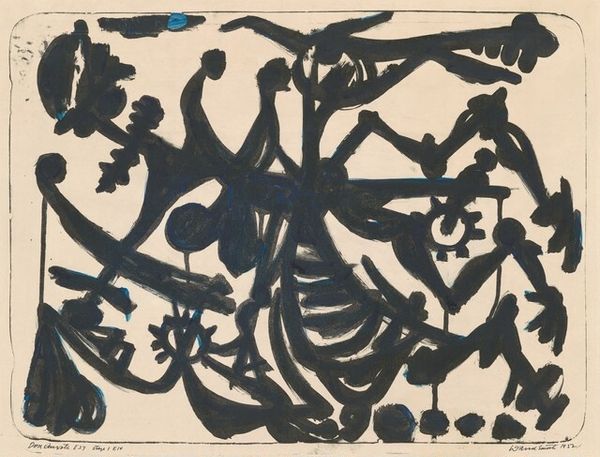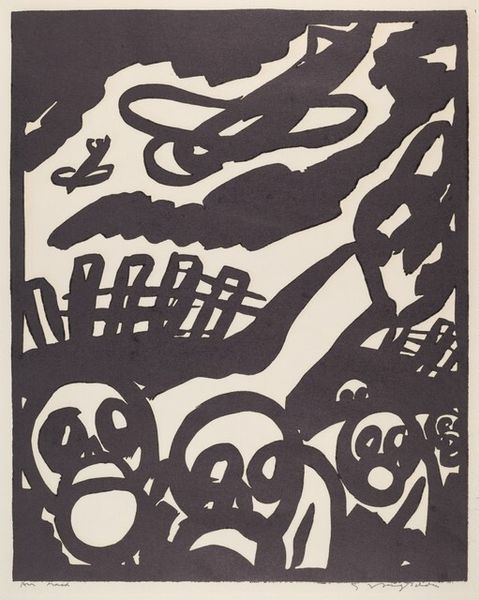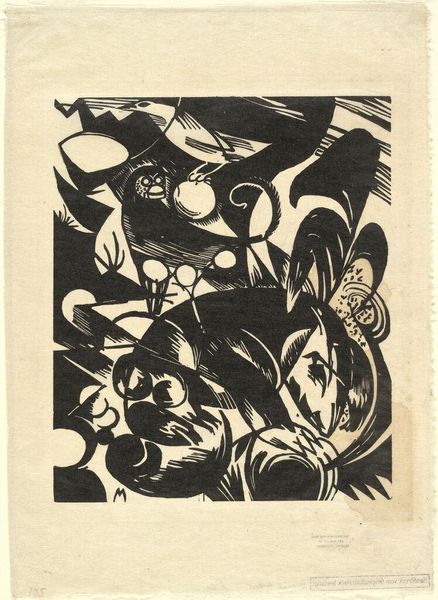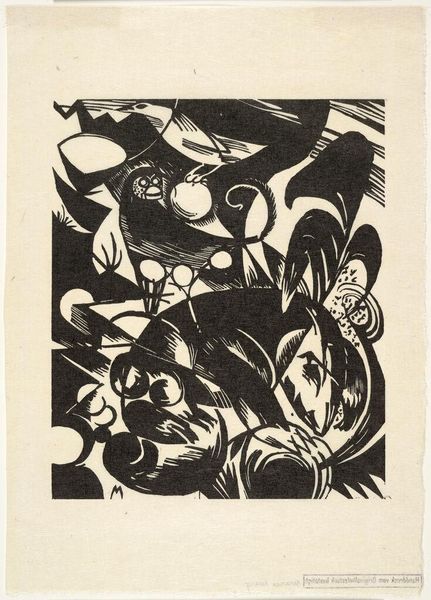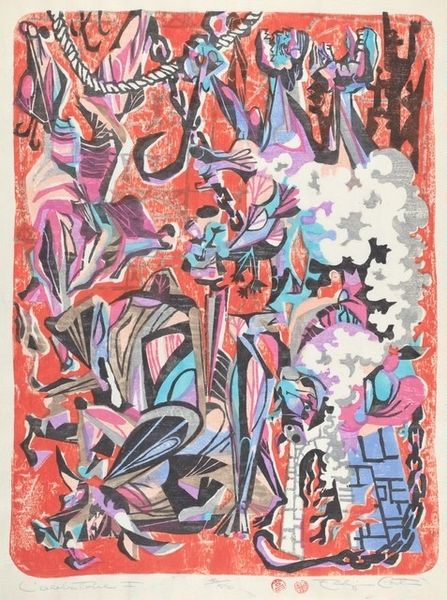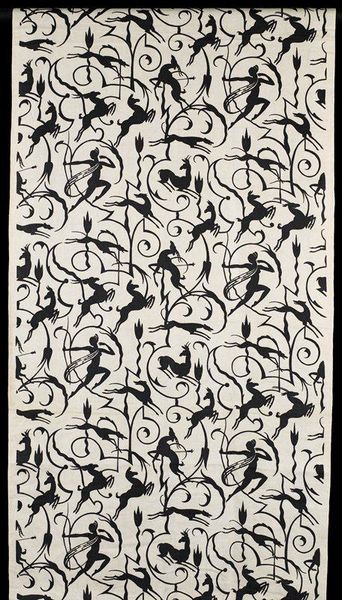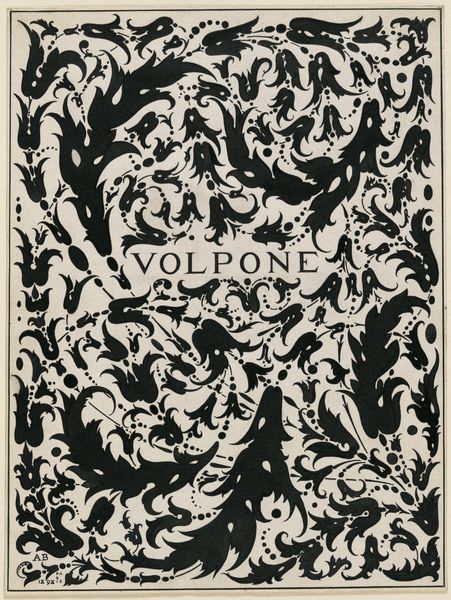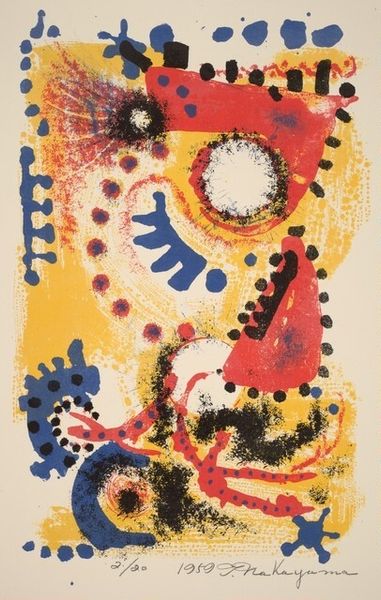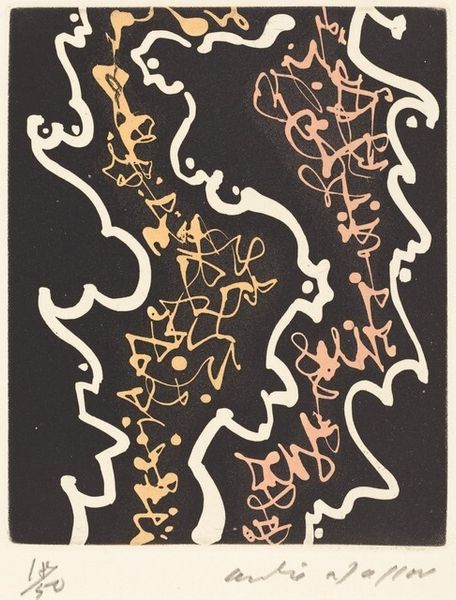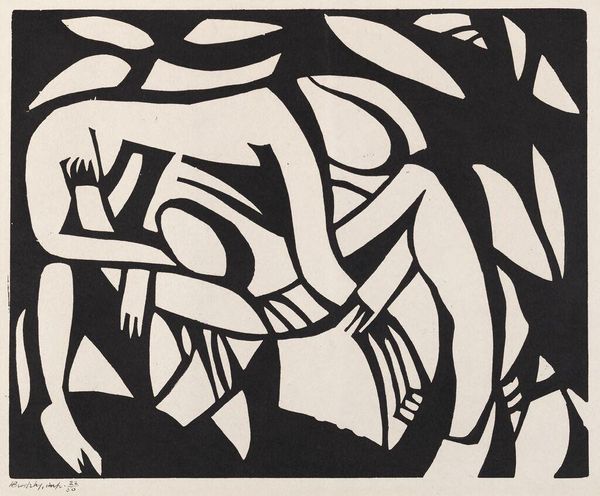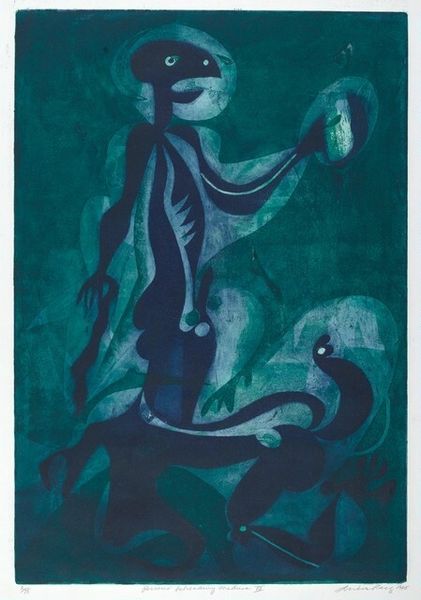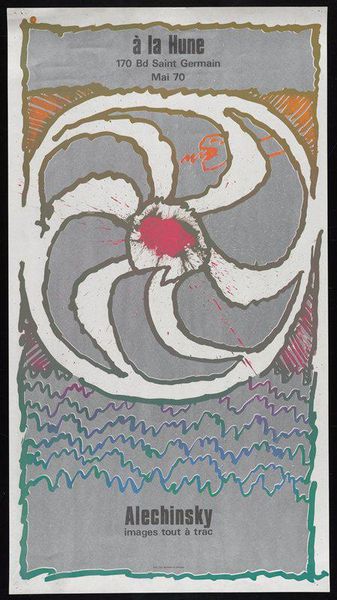
collage, print, fumage
#
organic
#
collage
# print
#
fumage
#
abstract pattern
#
organic pattern
#
line
#
surrealism
Dimensions: sheet: 37.94 × 28.26 cm (14 15/16 × 11 1/8 in.)
Copyright: National Gallery of Art: CC0 1.0
Curator: Andre Masson created this illustration in 1960 for Robert Desnos’s book, 'Mines de rien.' It seems to incorporate collage, printmaking and fumage techniques. Editor: It's dark, chaotic…but energetic. Like a swarm of fireflies trapped in a box. I'm drawn to the contrast between the inky blackness and the bursts of white and colored shapes. Curator: Well, "Mines de rien" translates to "never mind" or "of little importance." Knowing Masson's interest in automatism, that surrealist technique encouraging spontaneous creation without conscious control, it’s intriguing to consider how chance and the subconscious influenced the production of this image. What materials did he happen to have at hand? What methods allowed the composition to flow quickly and naturally, dodging intent? Editor: I see so many hidden figures. Faces in profile, abstract bodies. The shapes, while seemingly random, almost tell a fragmented story. I keep seeing these sort of blooming asterisk shapes – what could those signify, particularly with those surrounding fields of red or blue color? Curator: They evoke an almost explosive energy within that structured, almost geometric backdrop of evenly placed fields of color, don't they? It also prompts questions about how Masson combined such processes to create depth and texture. It seems the fumage might have been executed through burning and collage techniques possibly layered to construct a print matrix, suggesting that manual processes were heavily integrated into his methodology. Editor: Masson often tapped into deeper psychological or mythological symbolism. The white figures might evoke the fragility of the subconscious. The black background perhaps stands in for the unknown and unexplored parts of the mind, a sort of dark abyss. And those color bursts read almost like emotional eruptions. Curator: Perhaps the juxtaposition also explores his reaction to political or existential contexts following both World Wars and in post-colonial society. To me the question is: What available material and chemical process allows Masson to confront the viewer and engage that societal mood? Editor: Thinking about Masson's symbols, I think you can read so much more into such works. Thanks to it, and thanks to Masson! Curator: Agreed, considering those material processes really informs its impact!
Comments
No comments
Be the first to comment and join the conversation on the ultimate creative platform.


